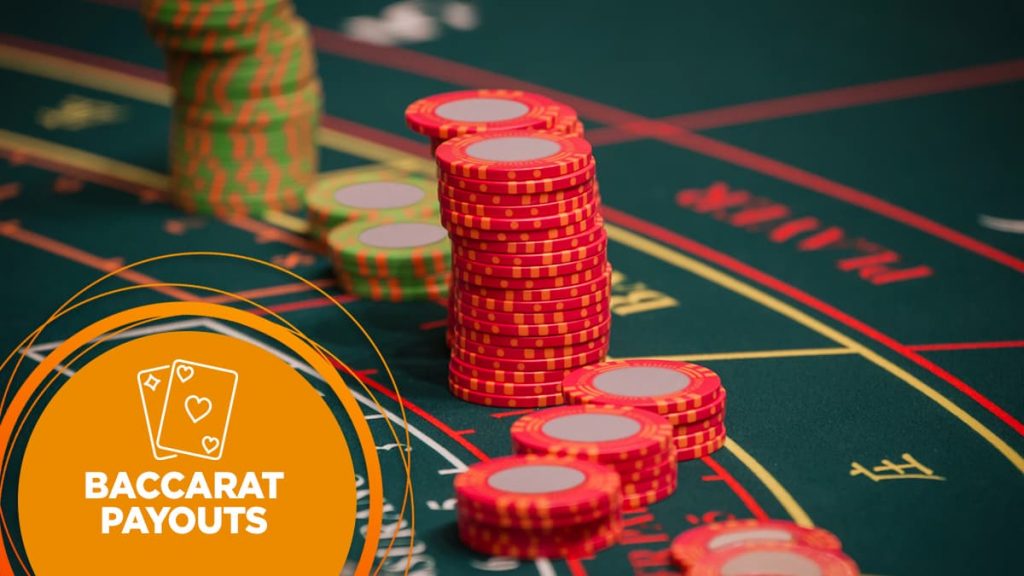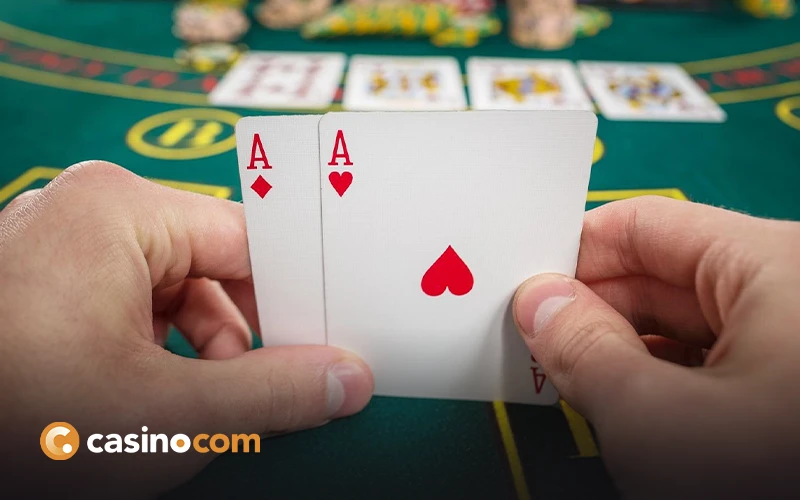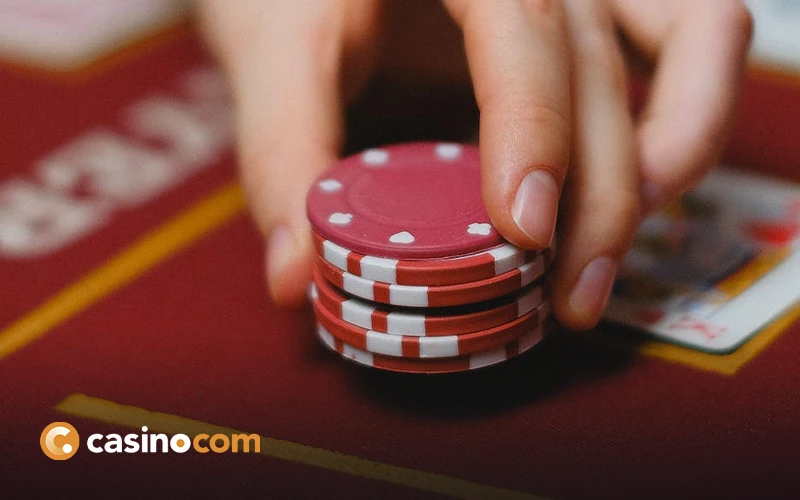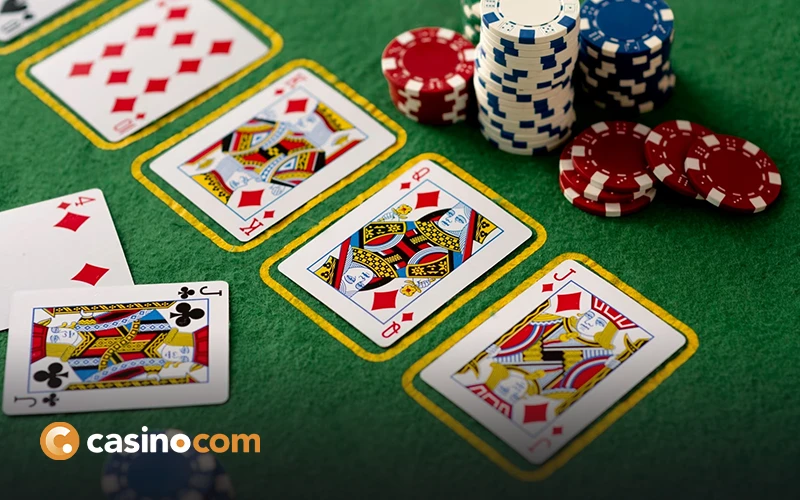It’s easy to view playing baccarat as a difficult thing to do, especially given its rarity at online casinos compared to roulette and blackjack. However, much like the latter game, baccarat is based on a single total, in this case, nine. This storied hobby has its own set of rules and quirks, though, which requires a small amount of book learning by the player.
Don’t be put off. Whether you’re playing at a land-based casino or in an online baccarat lobby, this game’s simplicity is sometimes compared to wagering on the toss of a coin (provided that it can land on its edge).
To reinforce that statement, today, we’re going to look at baccarat odds and payouts, learn how the house edge is applied, as well as the different bets involved, so that you have all the tools necessary to approach advanced baccarat play.
Let’s begin with the odds of baccarat.
Baccarat Odds
Odds tend to be an unchanging thing in a casino but certain rules and ways of playing can influence these numbers – for better or worse. In baccarat, the player will make one of three bets before a game begins. These are:
-
- Banker’s hand to win.
-
- Player’s hand to win.
-
- A tie.
As you might have guessed, you’re betting on the outcome of the game (who wins or whether it’s a draw). After these bets are taken, both the player and the banker are dealt two cards. Then, as mentioned, the side with the total closest to nine wins. It’s worth mentioning here that several cards have a value of zero (face cards, tens) while aces are worth a solitary one.
Baccarat is not played with any double-digit values. Totals that come to ten and over must either have their first digit removed or ten deducted from their overall value.
We’ll cover this in later sections, but all the possible wagers in baccarat have a different house edge, odds, and payout size. Generally, the banker bet is the most likely to win, while the tie is a relatively rare outcome. Fittingly, these wagers have the lowest and highest baccarat payouts, respectively, and the best and worst baccarat odds.
The Influence of the House Edge
In every casino game, the house edge makes the casino more likely to win. This small taking is how the website pays for its upkeep, new games, and employee wages. Baccarat is a little strange in the sense that you can bet on the casino even with this advantage intact.
This isn’t quite as generous a gift as it sounds, as you’ll have to pay a 5% commission on a winning bet for the privilege. Be aware that two different things are at work here: the baccarat house edge and the commission. These are not the same.
As a golden rule, betting on the bank is the best way to play baccarat, despite the extra fine print. In contrast, wagering on the tie makes very little sense.
The house edge on all standard baccarat bets are:
-
- Banker – 1.06%
-
- Player – 1.24%
-
- Tie – 14.36%
The interaction between the baccarat house edge and the amount of money the player wins may not be immediately obvious. However, the casino’s slight advantage does reduce your chances of winning and, therefore, the amount you can win over a certain period. A baccarat table is still a place of high odds and payouts, though.
Payouts and Odds
The most important part of any casino game, the total baccarat payouts and baccarat odds are listed below, along with a few important notes.
The Banker Bet
The odds on a bet on the banker winning in baccarat are 45.86%. If successful, the payout is 1:1. Here you should be able to see the influence of the commission on banker bets, as although you’re paid even money when you win, you must later pay a 5% commission before leaving the table.
The Player Bet
This is a bet on the player hand to win. This wager has a win percentage of 44.63%, which is slightly worse than the banker but still a large improvement on the tie bet, below. Players do not need to pay commission on their hand, as they’re not taking advantage of a smaller house edge. The payout here is 1:1.
The Tie Bet
The tie or draw is what happens when both the player and banker have hands of the same value. A tie has a 9.51% chance of occurring. This produces a ‘push’, whereby the game is ended without losses or gains for either participant. Tie bets have a high payout of 8:1.
Bets and Outcomes, Some Examples
Below we’ve collated a few examples of bets and their baccarat Return to Player or RTP value. Note that, in every case, you get to keep your initial wager and the amount in the Return column.
| Hand | Bet | Outcome | Payout | Return |
| Player | £/$1 | WIN | 1:1 | £/$1 |
| Player | £/$10 | WIN | 1:1 | £/$10 |
| Banker | £/$1 | WIN | 0.95:1 | £/$0.95p |
| Banker | £/$10 | WIN | 0.95:1 | £/$9.50p |
| Tie | £/$1 | WIN | 8:1 | £/$8 |
| Tie | £/$10 | WIN | 8:1 | £/$80 |
Side Bets
As far as the type of bets you can make is concerned, baccarat can come across as a little inflexible, even uneventful. The concept of side bets – wagers on and around the gameplay – provides an ideal salve to this problem, expanding what players can bet on and the number of different ways for them to win.
A common theme with side bets is that they are placed before the game starts and often come with much better baccarat odds than the maximum 8:1 that the standard baccarat experience offers. Many side bets are specific to game versions, including live baccarat and in-person games, and even to individual casinos.
-
- All Red or All Black – a bet on the colour of the card suits received. This usually pays between 22:1 and 24:1.
-
- Bellagio Match – requiring a three-card game, all the same rank. The payout on this one is a huge 75:1 for the player and 68:1 for the banker.
-
- Royal Match – only available at casinos in London, a Royal Match is a bet on both a King and Queen card appearing in the first two cards dealt. The baccarat RTP is 75:1 (K & Q of the same suit) or 30:1 (not suited).
-
- Big and Small – this is a bet on the total value of four, five, or six cards. Again, this can require a three-card game. Pays 3:2 (four cards) or 2:1 (five or six cards).
-
- 3-Card Six – if the player and banker get a total of six across three cards each, this side bet pays out 100:1. It only has a payout of 8:1 on a single three-card six, though.
This section reveals some interesting parts of baccarat gameplay, such as the third card, which can be requested in normal play but complicates matters somewhat.
Overall, baccarat is a simple game that can be enhanced with new bet types and additional rules. Plenty of online casinos do offer different takes on the classic baccarat experience, as well as novel side bets, so make sure you know what game you’re going to be playing before making your bets. If you still have queries, head over to our list of frequently asked questions about baccarat, where we have all the answers!
FAQ
Winning bets on the Player’s hand pay out 1 to 1. Bets on the Banker’s hand also pay 1 to 1, except if the Banker’s hand wins with a total of 6 points. In that case, you only receive half of your original bet.
Looking at the baccarat payout table, the Banker bet has a slightly higher chance of winning at 45.86%, compared to the Player’s hand, which has a 44.62% chance. If you ignore the Tie bet, the Banker’s hand has a winning probability of 51%.
If the player gets a complete hand, the dealer draws another card based on these rules: If the dealer’s total is 3, they draw a third card unless the player’s third card was an 8.
Banker Bet is the Best. The Banker bet has the lowest house edge, around 1.06%, making it the safest choice in baccarat. In contrast, the Tie bet has a much higher house edge, about 14.36%, making it the riskiest option, even if it seems tempting.

Previous: Baccarat Variations
Next: Betting Systems





